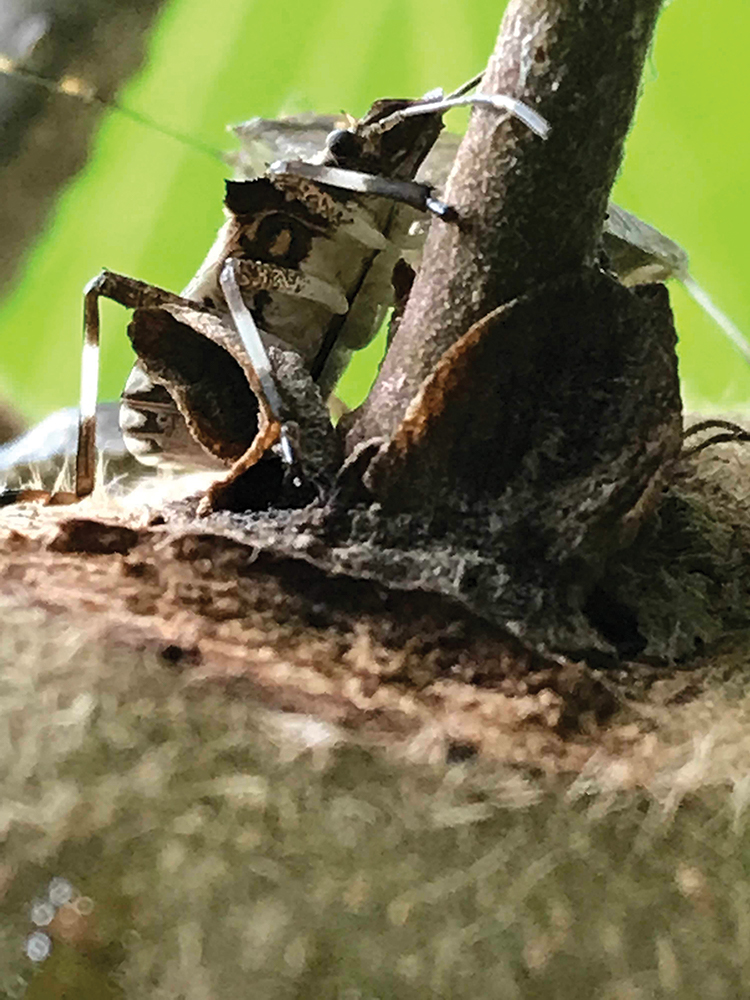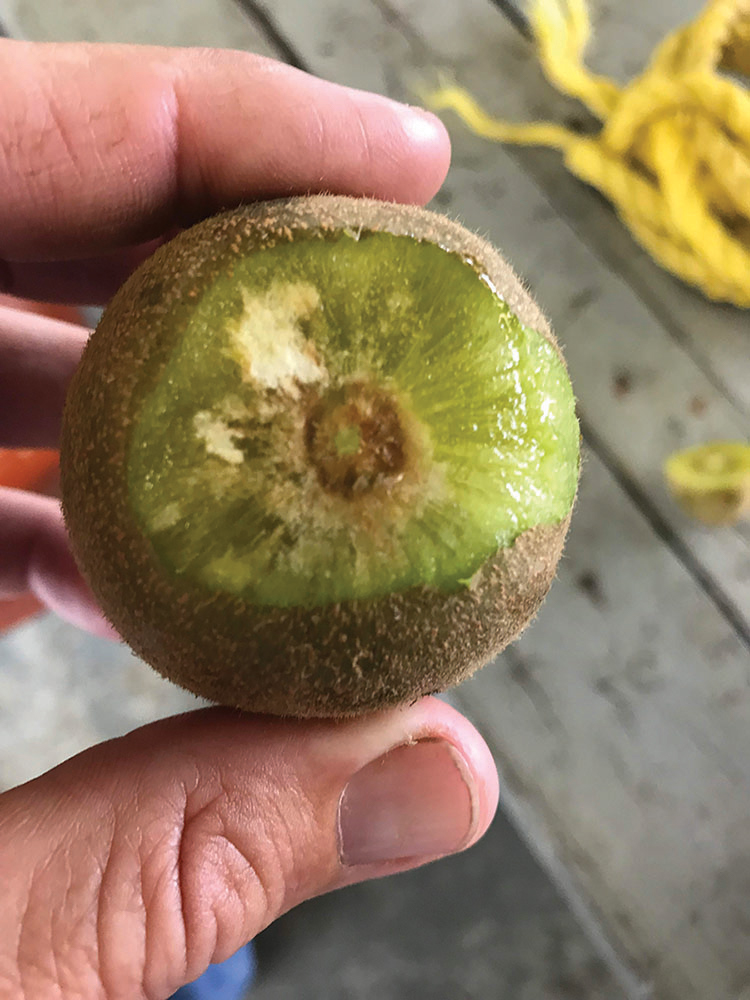Fall fruit season is here, a time to enjoy locally grown apples, pumpkins, pears and many other Autumn-ripening favorites, including a newcomer to the fall lineup — Alabama-grown kiwifruit.
These darling egg-shaped super-fruits, which are packed with exquisite flavor and exceptional nutrition, are native to China where they have been revered and cultivated for centuries. Kiwifruit gained its current name and an international fan base after growers in New Zealand successfully commercialized and marketed the crop. Large-scale production soon expanded to other countries, including Chile, Italy and the U.S., primarily in California, which established a thriving kiwifruit industry in the 1980s.

About that same time, Auburn University horticulture professor and small fruit expert Billy Dozier saw potential for this semi-tropical fruit here in Alabama. Working with Alabama Agricultural Experiment Station researchers across the state to evaluate kiwifruit varieties and their cultivation requirements in our southeastern growing conditions, Dozier soon identified one the biggest challenges for kiwifruit production in Alabama: our winter. Or, rather, our lack of winter.
According to Matthew Price, director of the Chilton Research and Extension Center in Clanton, which has been the hub of Auburn’s kiwifruit research all these years, kiwifruit are much like apples and peaches. To properly set fruit, they must be exposed to temperatures below 45 degrees for a specific number of hours each year, which can be a challenge here in mild-wintered Alabama.
Dozier and his team addressed that issue as they developed new varieties of kiwifruit designed to thrive in Alabama. To date, Auburn has released five patented cultivars including one of the fuzzy-coated, green-fleshed, sweet/tart-tasting kiwifruit that we’ve all grown to love, as well as several smooth-skinned, yellow-fleshed, tropically flavored (think pineapple/mango) golden kiwifruit cultivars, which possess an extra special quality.

“Golden kiwifruit require 750-850 chilling hours, depending upon the variety, whereas most green kiwifruit varieties require over 1,000,” Price explained.
It took some three decades, but in 2014 Dozier’s vision truly took root. That’s when Clint Wall, one of Dozier’s former students, and his wife Jenny began planting AU Golden Sunshine kiwifruit at Alabama’s first commercial-scale kiwifruit operation, Southeast Kiwi Farming Cooperative in Reeltown. The orchard now is home to more than 40,000 vines which are already producing enough fruit to supply select grocery store chains in Alabama and beyond, a market that holds great promise for further expansion.
Kiwifruit is also a promising crop for gardeners who want to harvest some of their own fall gold and green, though the growing the fruit does require a degree of effort — and at least two plants. Why two? Because kiwifruit are dioecious (male and female flowers are produced on separate plants), so at least one plant of both genders (or up to four females for each male) are needed for pollination.
“On top of that, care must be taken to ensure that the vines bloom within the same time period,” Price says. “If they don’t, there will be no pollination, which means no kiwifruit.”
Kiwifruit have a lot to offer, but they also expect a lot from their growers. They need well-drained soils, trellises to support their heavy vines, significant amounts of water and fertilizer and extra protection from spring freezes and a variety of pests.

“Kiwifruit is a labor-intensive crop,” Price admits, “but for a home gardener with just a few vines, it is very doable.” Plus, he says, “Kiwifruit are packed with so much flavor and nutrition, it’s worth the time and effort to grow your own.”
Now is a prime time to find locally harvested kiwifruit at area grocers and farmers markets, and also to see the kiwifruit plantings at the Chilton REC, which welcomes visitors and is open most weekdays. (Call ahead at 205-646-3610 to check hours or schedule an appointment.)
In addition, information on growing kiwifruit is available through local Alabama Cooperative Extension System offices, from Petals from the Past nursery in Jemison (205-646-0069) and from other reputable kiwifruit plant suppliers.
October Tips
• Cut and preserve herbs for use during the winter.
• Save seed from flowers, vegetables and herbs.
• Plant shrubs, trees and perennials.
• Plant lettuces, spinach, turnips, radishes, onions and garlic.
• Test soil and add amendments as needed.
• Prepare garden tools, equipment and supplies for winter storage.




